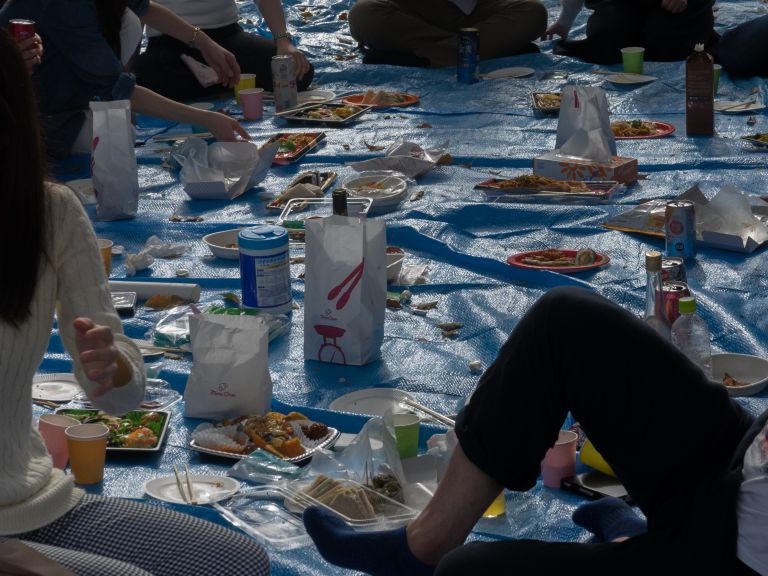Project Detail: About picnic and borders
Contest:
LuganoPhotoDays 2017
Brand:
LuganoPhotoDays
Author:
Marcos Losada
Project Info
About picnic and borders
It would seem that there is no pleasure more universal than enjoying a fresh picnic outdoors: a point of borderless commonality amongst all cultures. Yet the unspoken etiquette of how and where one picnics, how one creates a private environment in a public space, is actually incredibly revealing of one's own culture and where different societies deem the boundaries of the pleasurable to lie.
Here you see Japanese picnickers in Ueno park in Tokyo enjoying 'hamami' (the act of viewing cherry blossoms in bloom). I find this image full of intriguing borders. Firstly, there are the physical lines of the picnic boxes on the pavement. The lines are meant to separate picnic zones from passerby zones of the park, but picnickers have also taken them as demarkations of personal space, effectively using these boxes to carve their own personal picnic islands out a sea of asphalt. Different picnicking groups do not seem to mind picnicking very close to one another, as long as each respects the confines of their own box. Therefore the borders of the boxes, though they are mere painted lines, acquire a threshold-like quality once personalised. For example, we can see picnickers have removed their shoes before entering their boxes, much like when entering a Japanese house.
On a second level, the image codifies unspoken cultural borders by highlighting what different societies deem to be a "picnickable" spot or appropriate picnic behaviour. To the foreign eye, a box on a pavement, squeezed close to others might not seem ideal. Yet to Japanese picnickers, what matters most is proximity to the sakura. Sitting below the fragrant blossoms is the best possible spot, no matter where or next to whom that might fall. Similarly, to some foreigners, having members of one's picnic party slump over and fall asleep would be deemed extremely rude. It is better to excuse oneself and return home to sleep, than to sleep in public. But to the Japanese, napping in public is a sign of one's hardwork and is entirely acceptable.
In other words, depending on where you are from, you might find these scenes very odd or completely normal. You might see rudeness where there is actually arduousness, you might see misfortune where there is great enjoyment. This leads me to realise the existence of yet another boundary: the boundary caused my own Swiss way of thinking, i.e. my way of viewing an image in the making. Not only is there a natural boundary between, myself, the photographer, and my subject, created by the camera lenses, but there is also a metaphysical limitation created by my perception of an image in the making and the reality of that image.














